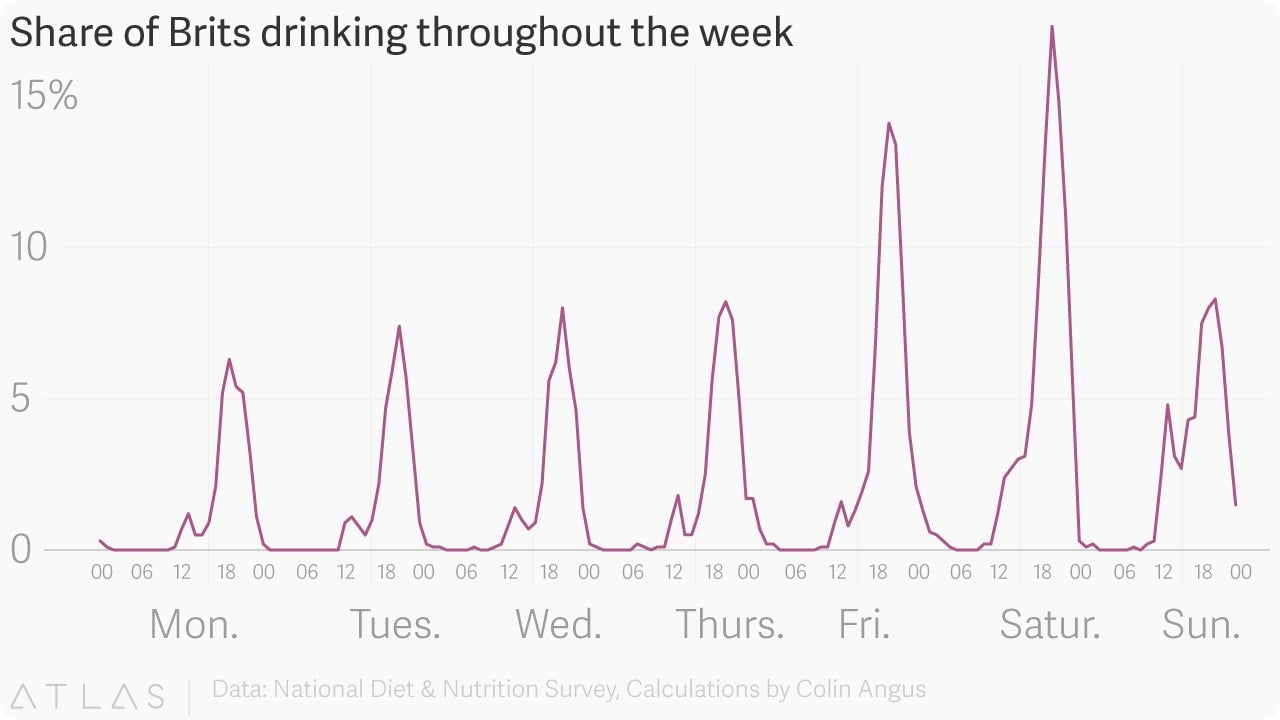When and where do British people drink?
British people like a drink—particularly between 8pm and 9pm on Saturdays. About 17% of all UK adults report boozing at that hour, more than any other time of the week, according to University of Sheffield alcohol researcher Colin Angus.


British people like a drink—particularly between 8pm and 9pm on Saturdays. About 17% of all UK adults report boozing at that hour, more than any other time of the week, according to University of Sheffield alcohol researcher Colin Angus.
The following chart shows the share of British adults who report drinking alcohol in each hour throughout the week. The analysis is based on data collected for the National Diet and Nutrition Survey, aggregated from 2008 to 2016, for which British people are asked to document all of their consumption for several days.

Where are Brits doing all this drinking? Mostly at home.
Of the 17% drinking between 8pm and 9pm on Saturdays, only about 5% are imbibing in bars. That’s reflective of a broader trend: In 1994, 58% of alcohol in the UK was purchased at bar and restaurants. In 2016, it was just 30%.
It’s an incredible shift, and one that’s endangering pubs. In 2000, there were about 60,800 pubs in the UK, according to the British Beer and Pub Association. By 2016, there were only 50,300.
“This pattern is not so well mirrored in other parts of the world,” Angus explained by email. “Mostly because they never drank that much in bars.” He says that the UK has among the highest rates of pub drinking in the world (though the Irish are higher), so they had a long way to fall.
The change appears to be driven by young people. Drinking among young Brits has been falling for the past 20 years. The share of 16- to 24-year-olds who say they don’t drink at all more than doubled between 2005 and 2015.
When they do drink, young people are far more likely to be drinking wine at home than beer at a pub. Store-bought wine sales doubled in the UK from 1994 to 2016. The rise of wine was largely driven by women, who have been winnowing the gender drinking gap for decades, and generally prefer a chardonnay to a lager.